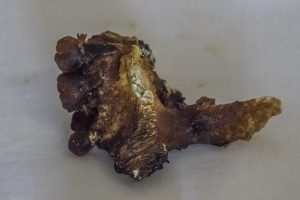Underwater archaeologists discovered a human skeleton at the wreckage site of the ancient ship that carried the clockwork device known as the Antykithera mechanism. The individual found at the 2000-year-old wreckage, off the shore of the Greek island of Antykithera, might reveal first DNA from an ancient shipwreck victim.

The human remains were discovered buried under around half a metre of pottery sherds and sand. Among the recovered remains is a partially preserved skeleton consisting of a fragment of a skull with three teeth, two arm bones, several rib pieces and two femurs. Archaeologists are now planning to conduct DNA analysis on someone who has been under the sea for 2,000 years. So far only a handful of examples of human remains have been found on ancient wrecks. This discovery provides a unique chance to try to obtain new information and push the limits of DNA extraction.

So far the archaeologists mapped the shipwreck site located at the depth of 50 metres. They discovered wine jars, glassware, two bronze spears from statues, gold jewellery, table jugs used by the crew, enormous anchors, a teardrop-shaped lead weight. The ship is said to be a huge vessel for its time, possibly over 40 metres long with multiple decks for numerous people aboard. As the wreck is close to the shore at the foot of a steep cliffs, it is possible that a storm smashed the vessel against the rocks, causing it to sink. It is therefore possible that there are more remains of people trapped below decks, whose remains are waiting to be discovered.
(after Nature)